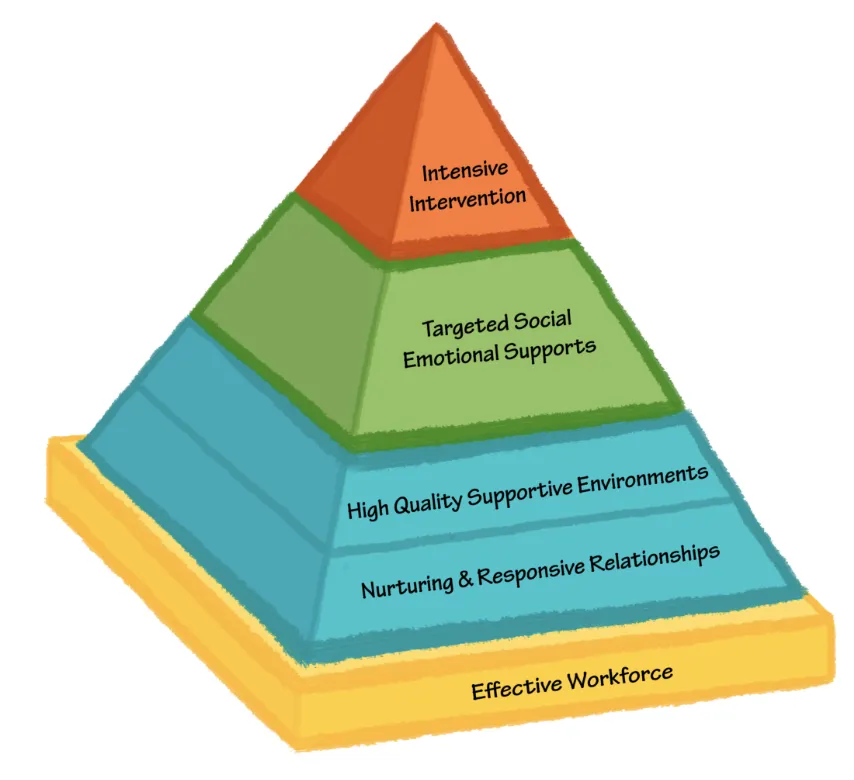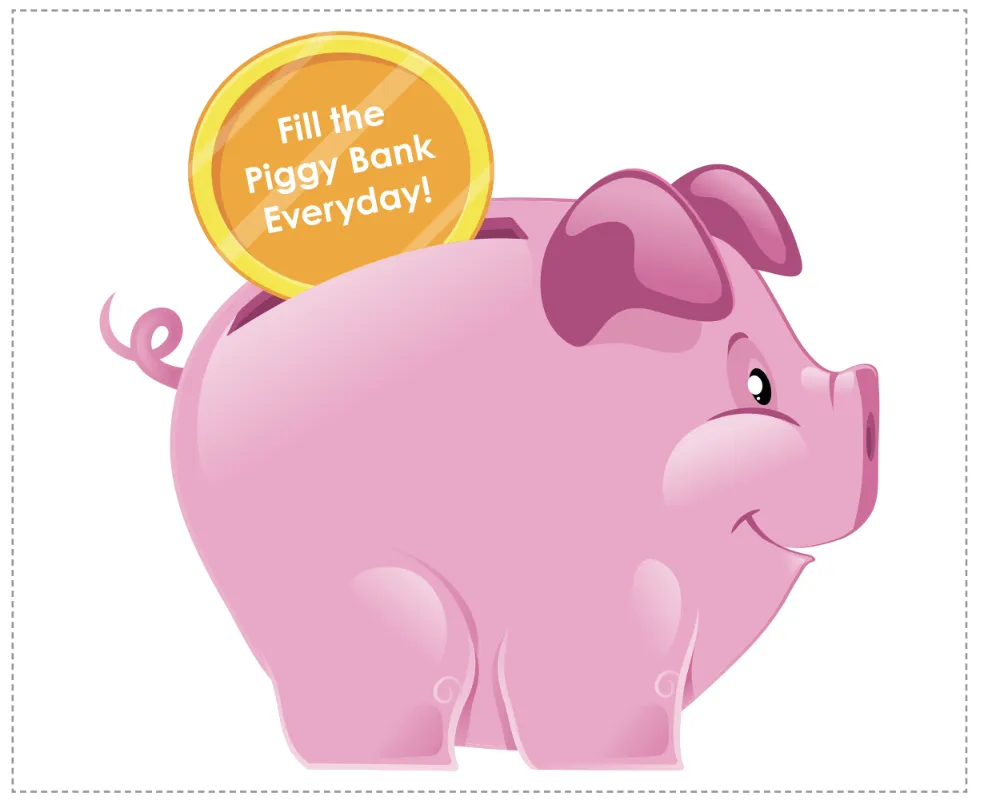The Pyramid Model
for handling Challenging Behaviors
What is the Pyramid Model?
Watch the 15 minute Introduction
Skip the first 10 minutes of this video if you are
crunched for time and need to get to the meat.
Main Points in this video:
10:00 Teach rather than punish
11:30 Messages children are communicating when they misbehave.
14:15 Child's misbehavior rewarded in one context but not another.

Tier 1: Nurturing and Responsive Relationships
Hot Buttons and "Reframing"
1:00 Relationships are the foundation
3:20 Hot buttons video University of Washington
7:00 What to do about hot buttons "reframing."
11:45 Reframing handout
12:00 Whining
13:20 Slow-to-warm-up child
14:00 Child who tries to escape
15:00 Destroying things

Handouts
Here are links to the handouts mentioned in Tier 1.
Tier 1: More about "Hot Buttons"
5 minutes
0:00 How "hot buttons" develop in the first place
4:45 How to handle tantrums
Tier 1: More about reframing
More about reframing.
0:15 Using "calming thoughts" to reframe
Tier 1: The Relationship Piggy Bank
1:00 5:1 ratio 5 positive statements to 1 negative
3:00 Relationship Piggy bank from UW
6:30 Strategies that build the relationship piggy bank
10:35 Examples of Deposits and Withdrawals
12:15 More examples of deposits
18:15 Everyone needs one person who is crazy about them (loves them)
19:00 Making deposits with families
27:15 Making deposits with co-workers
27:50 Review of "nurturing relationships"
Tier 1 High Quality Supportive Environments
The Physical Environment
0.45 Physical environment overview
1:45 Prevention strategies video from UW
4:50 Prevention strategies in the home
8:10 Using visual schedules to teach
15:45 Classroom centers (play areas)
17:30 Circle time magic from UW
19:40 Labeling where each toy goes at clean-up
23:35 Organizing children's toys
Tier 1 High Quality Supportive Environments
Schedules, Routines, and Transitions
1:30 Teaching schedules using puppets
3:10 Bedtime routine ideas
5:05 Teach expectations for routines
Tier 1 High Quality Supportive
Environments
Individual schedules, circle time, and other misc ideas
0:00 "First/Then" charts
1:00 Strategies to help children know when it is their turn
Circle time strategies
Tier 1 High Quality Supportive Environments
Job Charts
Job charts and possible jobs to assign kids
Tier 1 High Quality Supportive Environments
Rules
0:00 Pointers on giving directions to children
2:15 Pointers on setting and teaching rules
Tier 1 High Quality Supportive Environments
Review of both parts of Tier 1
0:00 Review of Pyramid Model Tier 1
0: 45 Review of nurturing & Responsive Relationships
1:15 Review of environments
Tier 2
Introduction
and knowing when to teach
0:00 Introduction to Tier 2 of the Pyramid Model
1:40 Teaching children what TO do instead of what not to do
2:40 Best time to teach
Tier 2
How to teach a child acquisition of a new skill
0:00 Steps to teaching a new behavior
2:10 Show and Tell phase of teaching
5:45 Fluency phase of teaching a new behavior
8:45 Generalization phase
Tier 2
Developing Positive Friendships
0:00 Teaching Friendship Skills
1:20 Misunderstanding the word "Share"
3:40 Strategies for two kids wanting the same toy
2:20 Peer mediated strategies
Tier 2
Friendship Skills Continued
7:10 Teaching children how to give complements
7:50 If you want it, teach it.
8:40 Embed friendship opportunities
Tier 2
Teaching Emotions: Emotional Literacy
0:30 Video from the University of Washington on Emotional literacy.
8:20 Video from the University of Washington on Emotion Regulation
16:15 Where to purchase things mentioned in the video.
Tier 2
Emotions Part 2: Specific Strategies
0:00 Video from U of W on Emotions part 2.
4:00 Feelings poster & other resources for teaching emotions.
14:00 Making Tucker Turtle video from U of W
18:10 "Think Five and Problem Solving Strategies" video from U of W.
27:05 "Problematize" everything
28:40 AntiBias Education: Problem Solving
39:30 Demonstration of materials you can use.
43:10 How to support children with problem solving in the moment.
46:10 Video: Children Interviews: Problem Solving from U of W.
47:10 Mand model
55:00 How to get resources from the Pyramid Model website.
An Explanation about
Brain Development
